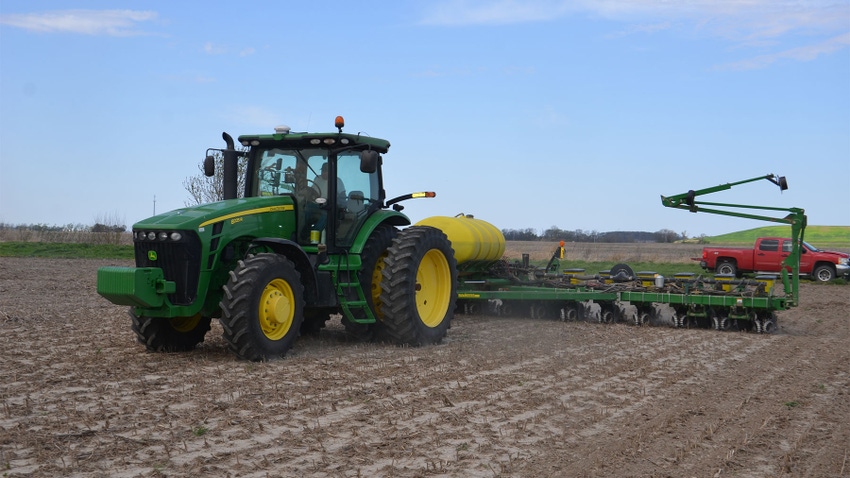
An art director once flipped a photo of a combine on a magazine cover by accident. But this isn’t that kind of mistake. The corn planting picture above is being used with a story about checking stored grain on purpose. Why?
“April and May are critical times for keeping corn still in bins in good condition,” says Greg Trame, director of technical sales for GSI. “But it’s also the same time growers focus on the new crop. We’re just reminding everyone about that money still in those bins. It needs to be monitored and managed, especially as temperatures warm up.”
Signs of trouble in bins
One way to head off trouble is to either keep grain cold or warm it up gradually as spring temperatures rise. Then it’s a matter of observing signs of a problem:
Smell. If you notice an off odor coming out of the fans, it’s an early sign a spoilage event is probably underway.
Carbon dioxide. Monitoring carbon dioxide levels is becoming more popular, because it operates off the same principle as smelling a problem — microbial activity increasing inside the bin.
“The advantage of carbon dioxide sensors is that you can pick up a problem quicker,” Trame says. “We’ve added carbon dioxide sensors to our GrainVue automatic grain monitoring product at GSI because we believe it has value.”
Temperature and moisture. Even if you don’t have an automatic controller, you can manage large bins more efficiently if you can monitor temperatures and moisture levels within the bin using cables. The goal is to identify pockets of wetter corn or hot spots. Heating also indicates a grain spoilage event.
Time to act to save grain
You have two basic options if you detect a problem in the bin, Trame says:
Turn on the fans. “The first course of action is to try to aerate your way out of a problem,” he says. “Turn on the fans and then monitor closely to see if it corrects the condition.”
Empty the bin. If aeration doesn’t take care of the problem, or if it gets worse, then the only option is to pull out corn. Ideally, empty a bin with problems, Trame says.
“This is why it’s so important to have someone responsible for making sure bins get checked even during planting,” he says. “If you catch a problem early, you have a better chance of controlling it with aeration.”
Automated grain monitoring
If you don’t have someone to designate to watch bins during busy seasons, an automatic grain aeration controller might be a good choice, Trame says. GSI sells GrainVue for this purpose, and several other options are available on the market.
“You still need to monitor bins even during planting, but if you have an automated system, it can take some of the load off of you,” he notes. “You can set parameters for aeration when warming grain up, for example, and it executes the plan.
“You can also program it to send you alerts to your cellphone if something gets outside of the parameters you set. It’s not a foolproof replacement for being vigilant about grain, but it is a useful tool.”
About the Author(s)
You May Also Like




